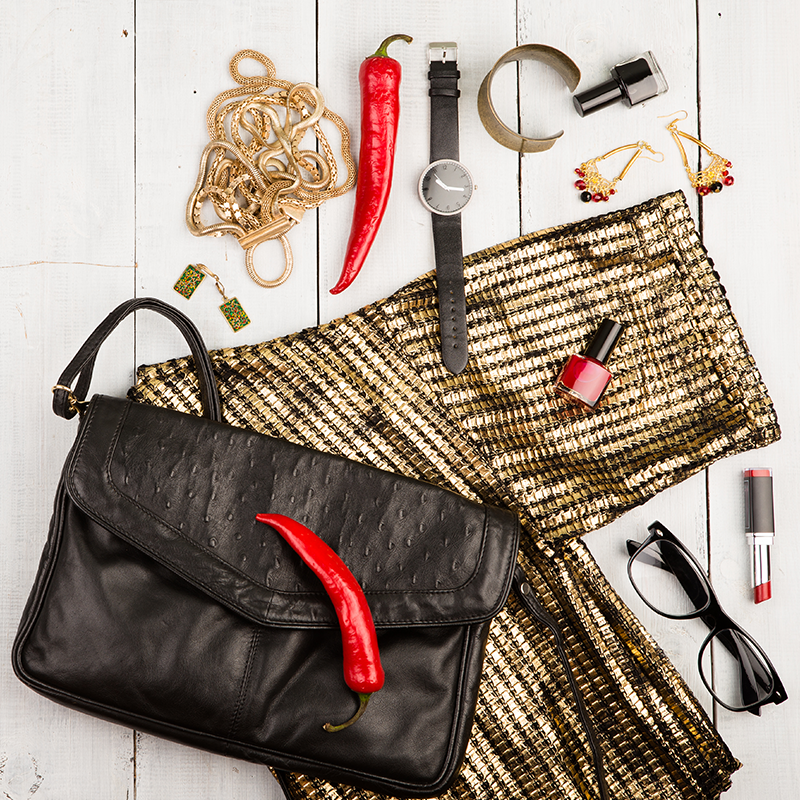Accessory Insights
How to Layer Accessories Like a Pro

When done right, layering accessories can instantly elevate your outfit and give it personality, depth, and balance. But if you've ever felt unsure about stacking rings, mixing metals, or combining chains, you're not alone. Layering isn't about overloading - it's about intentional combinations that look stylish and effortless. It’s the art of saying more with less, and knowing exactly where to stop.
Whether you're going for a minimal vibe or a statement look, layering gives you the freedom to experiment and express yourself. The trick is to blend structure with spontaneity - mixing lengths, textures, and shapes without letting things look messy or forced. So, if you’re ready to start layering like a pro, here’s your no-stress guide.
Start With One Hero Piece
Before layering anything, choose one item you want to build around. It could be a bold chain, a textured cuff, or a standout ring - whatever draws the most attention. This "hero piece" will anchor the rest of your accessories and set the tone for your look.
From there, add simpler, supporting pieces that complement - not compete with - it. The goal is to create a balance where the standout item shines while everything else adds to the vibe.
Mix Lengths, Not Just Pieces
One of the biggest mistakes people make when layering necklaces or bracelets is stacking similar lengths together. When accessories sit at the same level, they overlap awkwardly and lose their individual impact. Instead, mix short, mid, and long lengths to give your look space and structure.
For necklaces, try a short choker or pendant layered with a mid-length chain and a longer drop or lariat. The variation keeps the eye moving and creates a naturally styled appearance without feeling overcrowded.
Combine Textures for Visual Interest
Layering isn’t just about piling on more - it’s about adding contrast and dimension. Mix smooth, sleek metals with rope chains, beads, or leather for an interesting blend of textures. Combining different finishes - like matte and polished - adds subtle richness to your look.
You can even throw in one or two slightly rough or rustic elements to keep things grounded. This tactile mix helps each piece stand out without overpowering the whole.
Don’t Fear Metal Mixing
The old rule of sticking to just gold or silver is long gone. Today, mixing metals is not only accepted - it’s a style statement. The key is keeping it intentional: balance warm and cool tones in your layers so they look cohesive, not clashing.
For example, a silver watch can be paired with a thin gold bracelet and a mixed-metal ring to tie it all together. Choose one dominant tone, then add accents from the other.
Stack Rings with Intention
When it comes to rings, start with a few different shapes and thicknesses. Mix plain bands with textured or stone-set rings to build a dynamic yet balanced look. Stack across multiple fingers or layer rings on one finger.
Just make sure your rings don’t compete for attention - if one is bold, keep the others more minimal. And remember, leaving a finger or two bare can be just as stylish as covering them all.
Balance Both Hands and Wrists
If you’re layering bracelets, aim for symmetry without matching everything. Stack a watch with a couple of slim bracelets on one wrist, and leave the other side lighter or with a single statement piece. This gives your look a sense of balance without being too symmetrical.
Don’t overload both hands with rings, either. Keep things weighted to one side if you're going bold, or go evenly spaced with more delicate pieces.
Let Your Outfit Guide You
What you wear should influence how you layer. A simple outfit is the perfect canvas for bold accessories, while a busy print or loud texture might call for more subtle layering. Always step back and check the full picture - your accessories should enhance your look, not fight with it.
If you're wearing a high neckline, go for longer chains or stacked bracelets. For sleeveless or minimal tops, layered necklaces or statement rings shine better.
Know When to Stop
The most important rule in layering? Edit. Just because you have space doesn’t mean you need to fill it. Step back, look in the mirror, and remove one piece if things feel crowded.
Layering like a pro is about finding that perfect balance between effort and ease. When each piece feels like it belongs - and nothing feels forced - you’ve nailed it.


 Handbags and Wallets
Handbags and Wallets
 Travel and Casual Bags
Travel and Casual Bags
 Fragrances
Fragrances
 Lipsticks and Lip Gloss
Lipsticks and Lip Gloss
 Skincare
Skincare
 Makeup
Makeup
 Sports Accessories
Sports Accessories
 Footwear
Footwear

